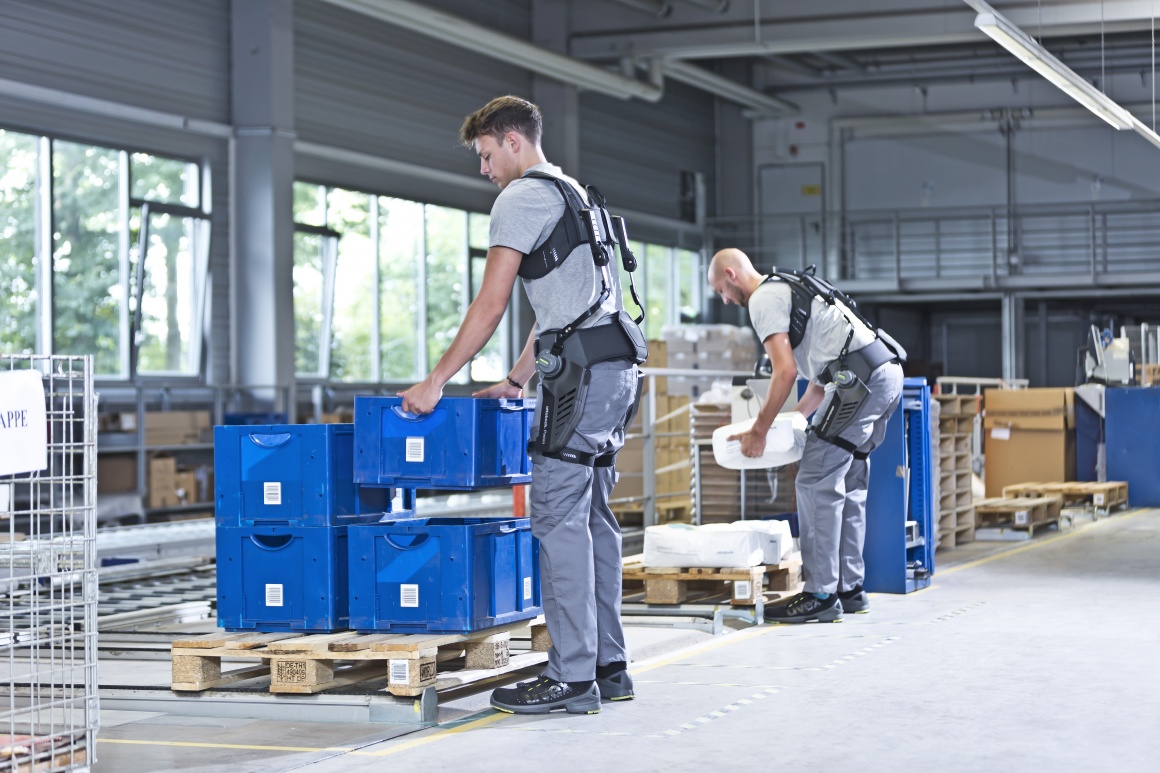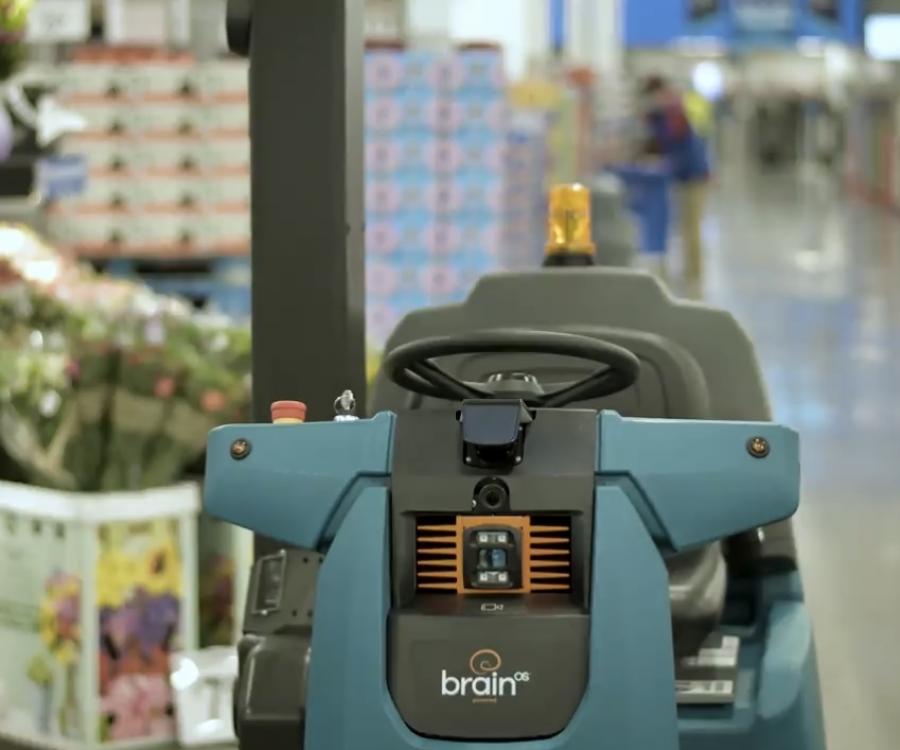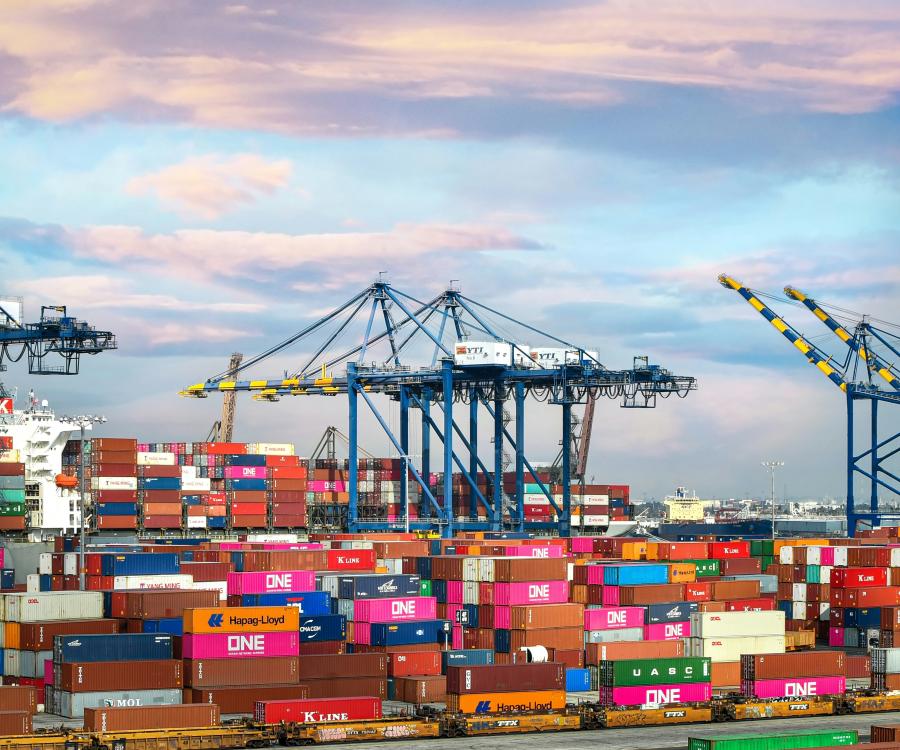
Workers in the logistics sector are subjected to extreme physical strain. In parcel distribution centres, each employee lifts around 180,000 kilograms every week – the weight of an entire Boeing 747. The consequences are back pain, an above-average number of sick days and staff shortages. Logistics companies are responding by looking for near-term solutions that will keep their employees healthy.
“There is still a lot of manual work, such as loading shipping containers, that cannot be fully automated yet. That’s why we need systems that provide our employees with physical support – on the last few steps to the goods, so to speak,” says Gerald Müller, Head of Industrial Engineering at DB Schenker in Frankfurt am Main. The company has been testing various exoskeletons for different applications in logistics for a number of months. Mr Müller shared the company’s experiences at Ottobock’s virtual trade conference, ExoMeet Logistics. At the conference on 25 February, experts discussed exoskeletons in logistics in front of an audience of around 800 participants. In this context, Ottobock presented a new study: The results show that the Paexo Back exoskeleton provides significant relief for the lower back when lifting packages weighing up to 25 kilograms.
The Paexo Back is an assistance system developed especially for use in daily routines in the logistics sector. “The exoskeleton functions according to a biomechanical principle ‒ like with a backpack, the load is supported on the shoulders and transferred to the thighs with the help of a support structure,” says Dr Sönke Rössing, Head of Ottobock Industrials. “It has no external drive, such as a motor or battery, so the system is particularly light and easy to handle.”
A new study based on lab tests and simulations now proves the effectiveness of the exoskeleton. Qualitative and quantitative data were collected with and without the exoskeleton in a group of five men and five women working in a simulated warehouse situation. The data included the subjects’ muscle activity, oxygen consumption, heart rate and movement profile. Based on these data, a biomechanical model was used to calculate the joint compression forces for the lumbar spine (vertebrae L4/L5 and L5/S1).
“The results show that the exoskeleton provides significant relief for the muscles and spine, with the relief varying depending on the weight of the loads,” explains Dr Rössing. “A 25-kilogram package feels like it weighs half that much when lifted with the exoskeleton. Strain on the back is reduced by 50 per cent. For lighter packages weighing five kilograms, the exoskeleton actually absorbs the entire load during lifting.”
The results of the study correspond with DB Schenker’s initial experiences with exoskeletons in various working situations, primarily order picking and packaging. “We tested exoskeletons from various providers over several weeks, but haven’t tested those from Ottobock yet. Our employees viewed the support provided by the exoskeletons as positive on the whole, but feel there is room for improvement in terms of comfort and mobility,” says Müller.









